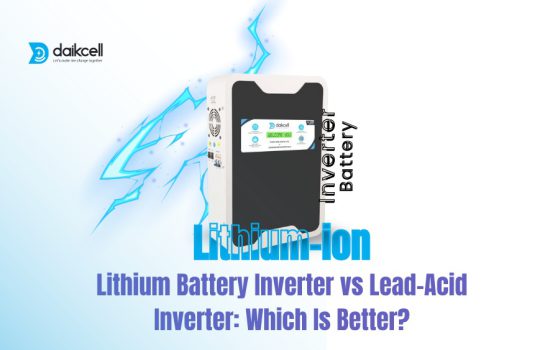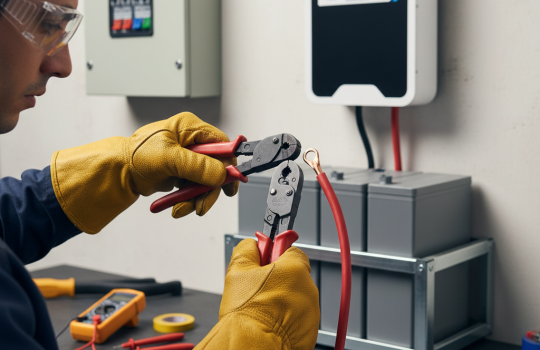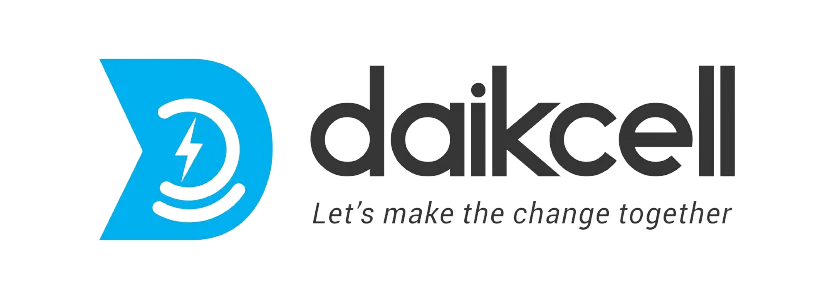One of the best energy solutions for modern homes is a lithium battery inverter. It provides clean, fast, and dependable power for solar and grid-based systems. Still, the best inverters think are the best still need attention and upkeep. Some simple habits and periodic maintenance will keep your system functioning for a long time and not case a drop in power output.
We will reinforce maintenance best practices, cover system upkeep, and the care tips of industry experts. And we will do the system maintenance and upkeep.
Practice Proper Inverter Care
Taking care of an inverter right starts with the location you set up the inverter system. Set the inverter in a clean, cool and dry space with no direct sun and no moisture. Do not set the inverter up in the distance of a kitchen, gas cylinders and heat-producing appliances. Enough space around the inverter is important to avoid overheating and allow smooth airflow. Overheating can impede the inverter’s performance. Check wires and terminals regularly for looseness, rust and damage. Dust and dirt can impede cooling circulation, so the surface should be wiped with a dry cloth weekly. A clean inverter operating space will yield better performance, and will also reduce short circuit risks.
Focus on Lithium Inverter Maintenance
Keeping up with your lithium inverter maintenance routine helps your system run its best. Lithium battery inverters need less maintenance than lead-acid systems, but less really is not none. Check the inverter display regularly for error codes, beeping, and odd fluctuations in voltage. When it comes to modern lithium systems, there’s a battery management system that protects the battery pack from overcharging, overheating, and deep discharges, but you still need to monitor those indicators and follow the service recommendations. It also makes sense to have a pro technician take a look at your inverter every year for thorough performance testing.
Apply Smart Lithium Battery Tips
Follow simple lithium battery tips to extend the life of your inverter system. Avoid completely draining the battery. Instead, maintain the charge level between 20% and 80%. This helps reduce wear on the cells and keeps the inverter working efficiently.Avoid connecting heavy appliances that exceed the inverter’s power rating. Overloading not only reduces efficiency but can also cause internal heat buildup. During long periods of non-use, store the inverter with a 50% charge and disconnect it from the grid to prevent unnecessary battery drain.
Stick to a Regular Inverter Maintenance Schedule
Making sure that your inverter stays reliable over long periods of time is achieved by consistent inverter maintenance. Each month or every three months, set time aside to review system health. Check cable joints, tighten any loose connections, and then make sure all indicators are working properly. Dust buildupcauses overheating, which is why it is important to clean your inverter regularly. Do not use wet cloths or cleaning sprays, as moisture can get inside through vent openings. A clean, dry, soft brush will be all you need to clean any air passages. Be sure to keep a record of your maintenance schedule, to help note any inverter behavior changes, such as decreased charging or strange sounds.
Ensure Proper Battery Care
Proper maintenance helps extend your lithium inverter battery’s lifespan. Keep the battery in a clean, climate-controlled area between 15°C and 30°C to prevent overheating or reduced efficiency. Avoid overcharging or deep discharging, as these can shorten battery life. During long power cuts, use automated low-voltage cutoffs to protect the battery from deep discharge. Periodically inspect terminals for rust or corrosion, which can affect power flow and performance. If rust appears, gently clean and apply a small amount of anti-rust petroleum. Avoid exposing the inverter or battery to dust, heat, or moisture. Use genuine connections and accessories for stable performance. Managing proper charging, temperature, and cleanliness ensures your lithium battery inverter operates safely and efficiently for years, providing reliable backup power and maximizing energy output while minimizing premature wear or capacity loss. Regular care helps maintain consistent performance under varying conditions.
Monitor Inverter Performance
Monitoring the performance of inverters assists in early problem detection. Most lithium inverters come with digital displays showing voltage levels, load capacities, and charge percentages. By reviewing these settings consistently, you can confirm that your system works within safe margins. Voiding any abnormalities in voltage drops, flow rate displays, and response times of power switches must be addressed promptly. If offered, the use of a smart monitoring system permits performance assessment of the inverter directly from your phone, enabling preventative measures to be deployed before catastrophic failures occur.
Improve Solar Power Efficiency
Monitoring the performance of an inverter allows for early problem identification. Most lithium inverters feature digital displays, which show, for instance, the voltage levels, load capacity, and charging levels. System operation within safe ranges is ensured by regular review of these indicators. Irregular voltage drop displays, power switch delays, and flickering displays can signal critical system issues. If offered with your system, smart monitoring tools can diagnose inverter performance problems remotely via smartphone, enabling proactive measures in the system’s fault prevention.
Avoid Overloading and Power Surges
One of the easiest means of safeguarding your inverter is avoiding overloads. Devices connected to your system should never surpass its rated power. Overloading is likely to cause internal fuses to trip, or even worse, damage sensitive circuits. To mitigate power surges, ensure the installation of surge protectors and a proper earthing system for your safety.
Inverters are also at risk of having their components damaged by lightning or unexpected voltage spikes. Therefore, ensure that all wiring connections are secure and that they were installed by qualified personnel. Prevention is best in order to mitigate costly repairs.
Use Original Accessories and Cables
Always use cables and accessories recommended by the manufacturer. Inexpensive or inferior quality connectors may seem like a good deal, but they can trigger fluctuations in voltage and loss of energy. Loss of energy and fluctuations of voltage can be hazardous. Proper insulation of wiring allows a more positive flow of energy through the system, adding to the system safety.
Do not extend the inverter cables unnecessarily. Longer cables add resistance, which lowers efficiency. Efficiency, as well as energy transfer and general dependability, all improve when the inverter is located close to the power source and batteries.
Schedule Professional Checkups
Although lithium systems offer impressive reliability, annual inspections by a licensed technician may uncover concealed problems. They are able to evaluate inverter performance, assess battery condition, and perform software updates, if need be. Professional servicing provides comprehensive assurance that, year after year, your inverter continues to function optimally and safely.
Moreover, keeping your inverter warranty and service records readily accessible may be beneficial. Frequent expert examinations offer tranquility and steady performance.
Key Takeaway
The maintenance of a lithium battery inverter isn’t burdensome; it only takes effort and consistency. As with most tasks, attention to detail will ensure optimal performance and longevity, whether it involves basic inverter care or smart lithium battery management.
Reliable systems need battery care, clean surroundings, and timely inverter system maintenance, and all components of the system need to work together, which maximizes reliability over the years. For inverters with solar panels, improving the solar panel to energize inverter efficiency will further boost lifespan and energy output.
Smart monitoring, rapid charging, and exceptional durability ensure the system is ready for the future. These are the most important factors to consider when selecting a system, as is the case with Daikcell Lithium Battery Inverters, which is also the most valuable in the market.
Ready to Power Your Home Efficiently?
Why wait for the next power cut? Experience uninterrupted energy, faster charging, and long-term savings with a high-performance lithium battery inverter.
Make the smart switch today and enjoy reliable power for years to come.
Click Here to explore or buy now Or you visit our website.
You Can also Buy it from ⇔ AMAZON







